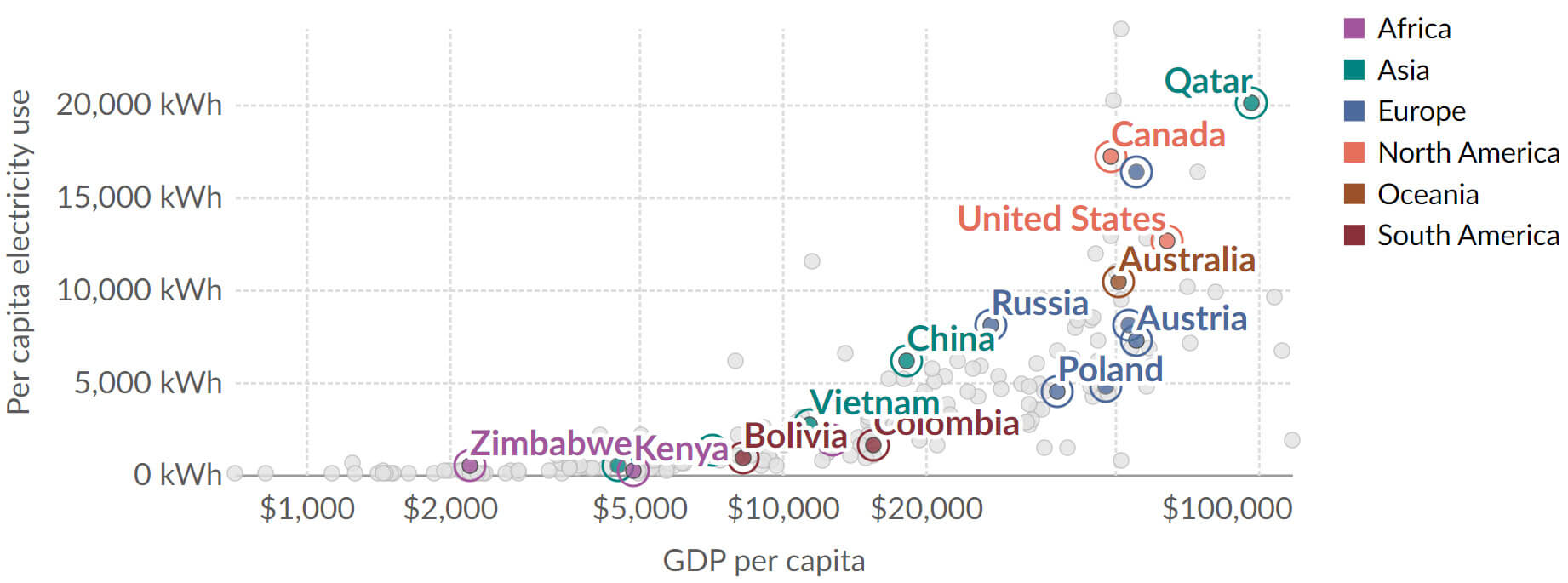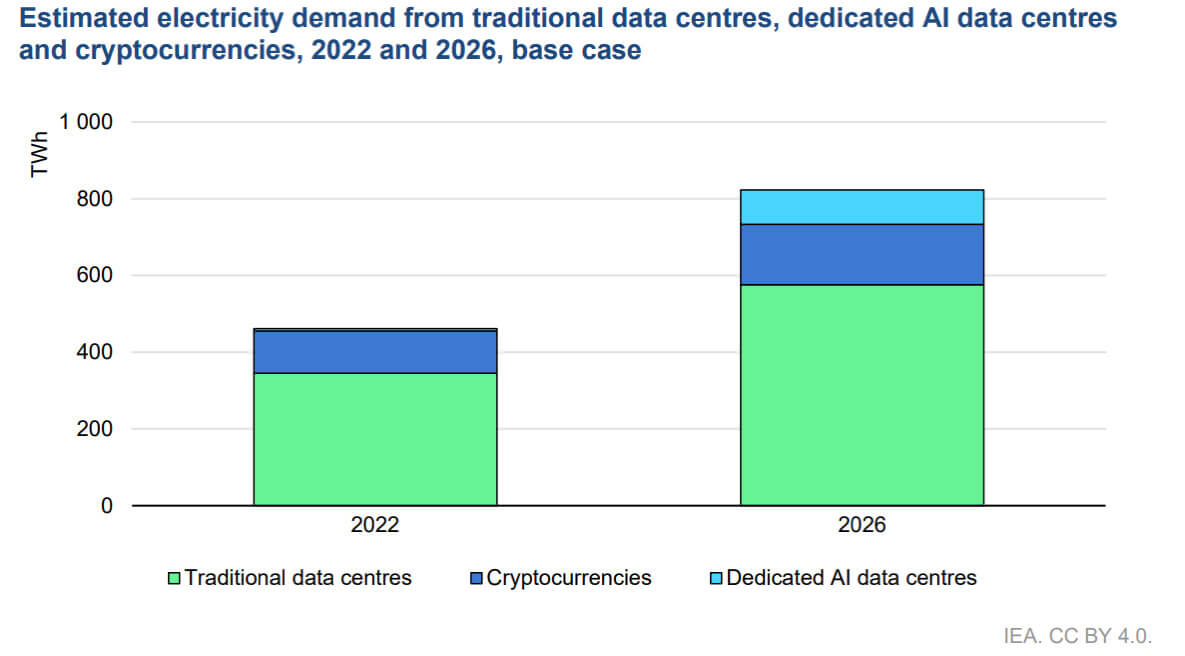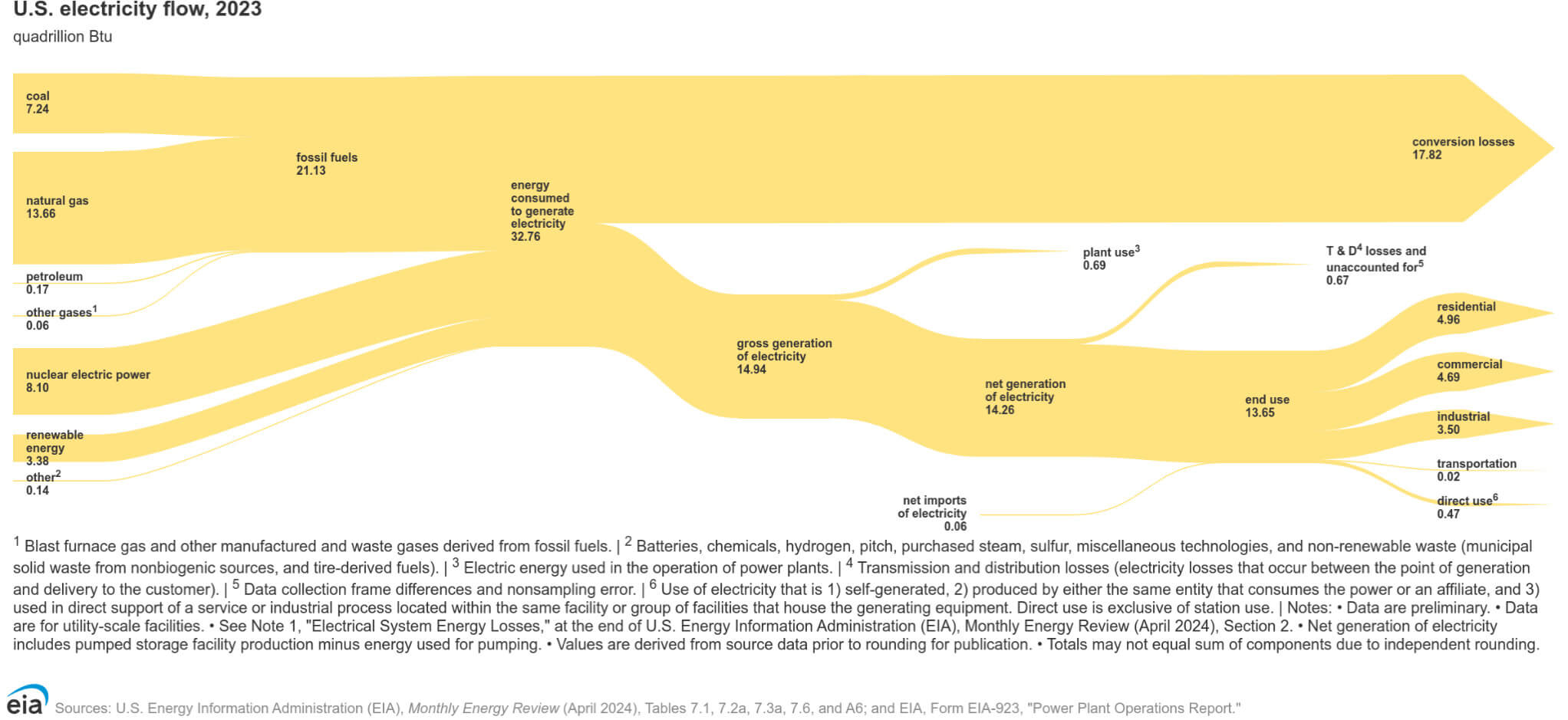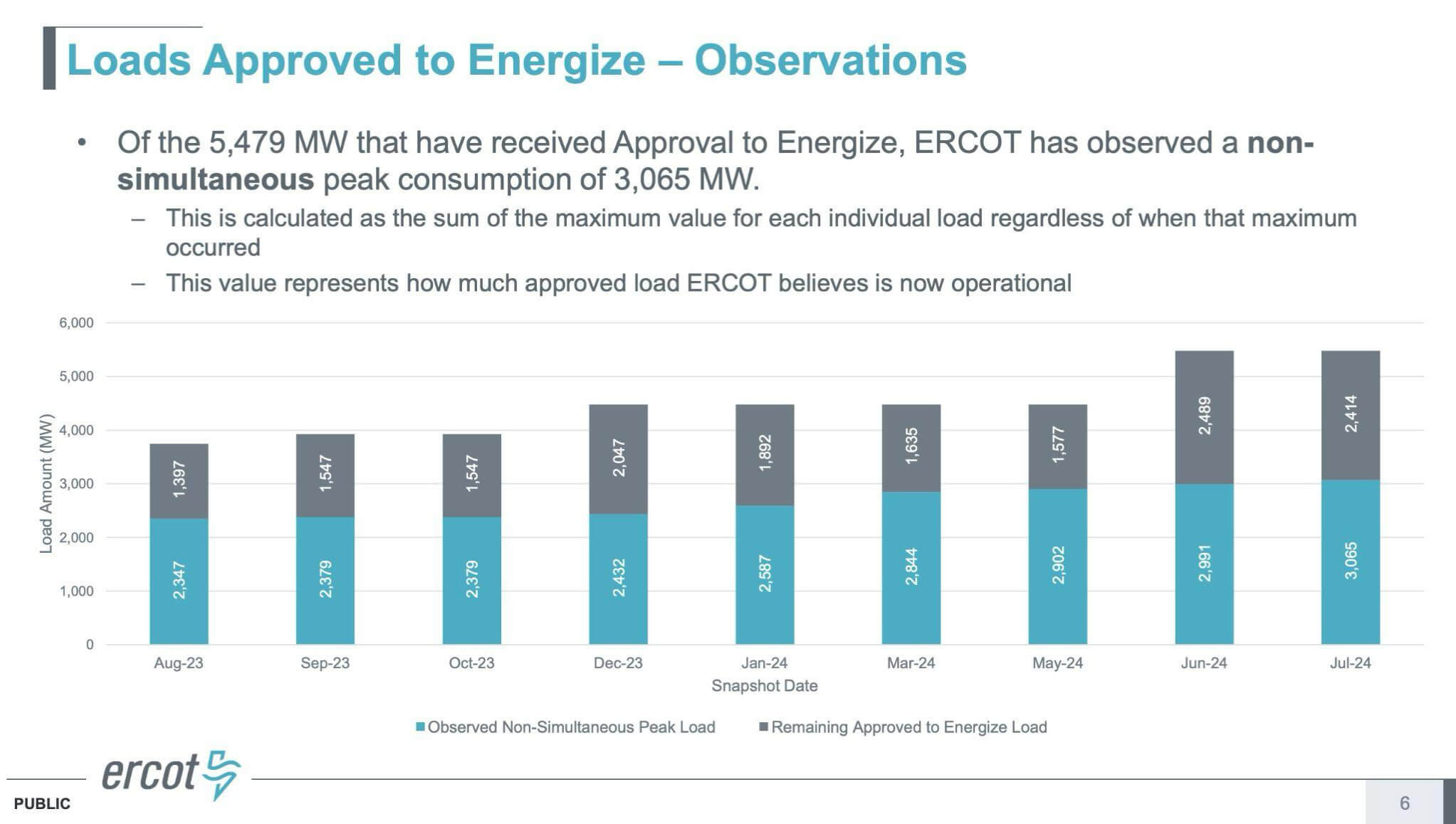The following is a guest post from Shane Neagle, Editor In Chief from The Tokenist.
When the Federal Reserve tampered with the money supply in 2020, by giving it a ~40% boost, everyone has been paying the cost of that tampering via inflation. In turn, people’s life energy is siphoned away as their savings are eroded. When more money buys less, extra energy needs to be exerted to keep the same pace.
The solution to this problem is obvious. Make money tamper-proof through decentralization and fixed supply. Let no one lord over it. That is the initial drive behind Bitcoin, but one that needs a critical component to work – physical grounding.
If Bitcoin were just a digital asset, it would be easier to alter the network’s ledger, known as blockchain. The elegant remedy for this is proof-of-work mining, which acts as an energy barrier tying Bitcoin’s digital code to real-world resources. If a would-be attacker is set on altering the ledger’s record, they would require an exorbitant amount of energy harnessing computational power.
At 733.41 EH/s (hashrate), such an energy barrier is virtually impenetrable. But that means that Bitcoin’s energy need is the cost of having tamper-proof money. Likewise, energy is the cost of having data centers churn out text//images/videos/codes whenever people prompt AI agents.
In both cases, human productivity is augmented. But can their energy needs be optimized in a symbiotic manner?
The Energy Dynamics of Bitcoin Mining and AI
It is safe to say that being a developed nation is strongly correlated with a high energy usage. This is clearly visible if we chart per capita electricity generation in kilowatt-hours (kWh) against a nation’s gross domestic product (GDP).

In other words, access to energy excess is a requirement for civilizational advancement to manifest. After all, when multiple layers are added to the basic subsistence level such as agriculture, new layers in manufacturing, transportation, public services, urbanization and computing need to be fed.
Going beyond mere data centers for internet browsing or online banking, generative AI and Bitcoin mining represent the latest civilizational layer as high-performance computing (HPC). HPC energy needs are exceedingly high.
According to the Department of Energy (DoE), data servers already use 10x to 50x more energy (per floor space) than commercial office buildings, while accounting for 2% of total US electricity usage. Given rising data center demand trends, the International Energy Agency (IEA) forecasts their total electricity consumption could increase over 1,000 terawatt-hours (TWh) in 2026.
For comparison, such a demand spike would be the equivalent to Japan’s present electricity consumption. Contrasted to Bitcoin mining, EIA notes that it exerted 130 TWh electricity demand.


Goldman Sachs Research estimates that AI data center consumption will exert 200 TWh annually between 2023 and 2030, given that a simple Google search query needs 0.3 watt-hours while a single ChatGPT query demands 2.9 watt-hours of electricity.
These trends call for significant optimization efforts. The Bitcoin mining industry has continuously exerted such efforts by upgrading to more efficient ASIC machines, primarily produced by Bitmain, MicroBT, Canaan, Bitfury, Ebang, and others.
Likewise, superior cooling solutions significantly reduce energy consumption as ASIC rigs can maintain lower operating temperatures for longer, reducing the need for cooling power consumption in the process. Liquid and immersion cooling is estimated to reduce Bitcoin mining operational expenses by up to 33%.
On the AI energy front, Nvidia’s GPUs dominate the scene with an estimated 65% market share. Nvidia’s latest Blackwell GPU microarchitecture has purportedly reduced energy cost by 25x from its predecessor Hopper. As the main supplier to Big Tech as Mistral, Meta and Apple leading the charge when it comes to locally-hosted large language models (LLMs), we’re about to see an uptick when it comes to GPU server hosting and adjacent architecture.
However, there is much more to energy consumption optimization than updating to better chips and tweaked cooling. And it is here that Bitcoin mining in particular could shine.
The Role of Bitcoin Mining in Energy Management
It is a simplistic idea to think that a power plant produces electricity, and then that output is received by the consumer. On that pathway, conversion happens from high-voltage transmission over long distances to lower-voltage for the end-user.
In other words, as the electric grid has to be balanced between high outputs and low inputs, it results in transmission and distribution (T&D) losses, accounting for 5% on average, according to EIA.
One way to deal with this balancing act is to rely on energy storage, which can fit gaps in rapid fluctuations between electricity demand and supply. However, not only is battery storage high in initial expenditure cost, but the dominant lithium-ion batteries are known to have thermal runaway risks, making them susceptible to overheating.
The bottom line is, no solution will beat the efficiency of getting closer to the energy source. This is why Bitcoin mining firm TeraWulf (Nasdaq: WULF) picked Nautilus Cryptomine as its main facility close to the 2.5 GW Susquehanna nuclear power plant in Berwick, Pennsylvania.
Drawing 300 MW directly from the plant, TeraWulf is positioning itself as the most efficient Bitcoin mining operation at 2 cents per kWh of zero-carbon energy.
More importantly, Bitcoin mining can aid the balance of electric grids by acting as a dispatchable load. Because HPC lends itself to high energy consumption, this translates to real-time adjustments of loads, leveling out the fluctuations in energy supply and demand.
As of July 2024, Electric Reliability Council of Texas (ERCOT) reported 3 GW worth of power out of 5.5 GW for Bitcoin miners’ load dispatching.
Not only does load dispatching provide an off/on ramp, depending on local deficit or surplus of power, but Bitcoin mining companies are incentivized to do so as they start reporting power sales.
In turn, this injects another security element into Bitcoin as tamper-proof money. Because Bitcoin mining companies can offset their costs during BTC selloffs by curtailing operations, they can receive compensation for playing their part in balancing the electric grid. Case in point, Riot Platforms (Nasdaq: RIOT) received $2.2 million from ERCOT’s demand response credits in January 2024.
In a more direct way, Bitcoin miners can also capture stranded energy by using up flared gas burned in oil and gas fields, or funnel/recycle heat produced by BTC mining to heat water or greenhouses.
AI and High-Performance Computing (HPC) Integration
So far, we have seen that:
- Both AI and Bitcoin mining are energy-intensive.
- Electric grids have friction as a function of distribution and load balancing.
- Bitcoin mining can lower that friction.
But can Bitcoin mining also integrate with AI data centers?
Although both are under the high-performance computing (HPC) umbrella, AI services demand low interruptibility. The success of present and future AI apps rides on their uptime/response time, making data centers unsuitable for deploying the same flexible load-dispatching strategy as Bitcoin mining firms.
At the same time, Bitcoin mining companies have a proven track record of innovation, harnessing continuous hydro/nuclear power and scaling their operations. And as AI-dedicated data centers put pressure on the electric grid, miners’ flexible load following can rapidly respond to their drain.
Alongside ERCOT, more states are starting to see this dynamic. At the end of May, Oklahoma House introduced bill HB1600 that would give tax credit eligibility to digital asset mining operations, with a special provision for load balancing.
“The mining must occur in a qualified colocation facility with a load reduction agreement with its retail electric supplier.”
To that effect, more Bitcoin mining companies are moving to host AI operations in a direct manner.
Hybrid Data Center Strategies
Despite catering to different HPC aspects, Bitcoin mining facilities are ideally suited to host AI operations as well. Not only do they have veteran personnel, but they emerged from an exceedingly competitive environment courtesy of Bitcoin’s mining difficulty and halvings.
It is then no wonder that a transition from pure-play Bitcoin mining into hybrid data center business is already under way. Australian Iris Energy (Nasdaq: IREN) announced a partnership with WEKA last October to provide both storage and GPU-stacks for generative AI.
Bernstein analysts recently forecasted that Iris will shift 15% of its power capacity to AI data centers. In June, formerly bankrupt Core Scientific (Nasdaq: CORZ) initiated the same co-hosting model after its bankruptcy restructuring. The company signed a 12-year contract with AI startup CoreWeave to harness 200 MW of its power capacity for AI HPC operations.
During that period, Core Scientific is expected to generate $3.5 billion in revenue, on top of its Bitcoin mining operations which rely on BTC’s spot price. Once again, such hybrid strategies boost Bitcoin’s bottom line.
If more Bitcoin companies are less likely to go bankrupt during bear markets, by leveraging AI data center business, the less pressure is there for BTC selloffs. In turn, sound money gets sounder by the year. Long term, it is not difficult to see the trajectory. A hybrid data center will be able to help companies manage digital assets on one hand, while being at the heart of sound money on the other.
Conclusion
Buoyed by the promise of cognitive automation, the world’s economy is receiving another layer on top of the digital, the high-performance computing (HPC) layer.
Just as Bitcoin tamper-proofs money with its vast energy-harnessing HPC infrastructure, AI data centers are paving the road for new jobs and productivity spikes. Their convergence is inevitable as well-honed Bitcoin mining operations expand into GPU stacks alongside ASIC stacks.
By doing so, they create a feedback loop of incentives. Bitcoin miners’ excess energy capacity funnels into load response credits and energy-hungry AI firms. Combined with AI agents capable of making autonomous BTC microtransactions, the synergy creates an exciting beginning of hyperbitcoinization.






